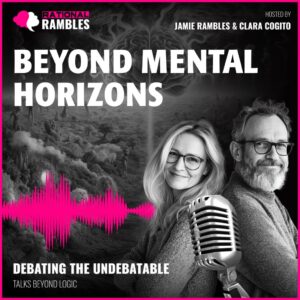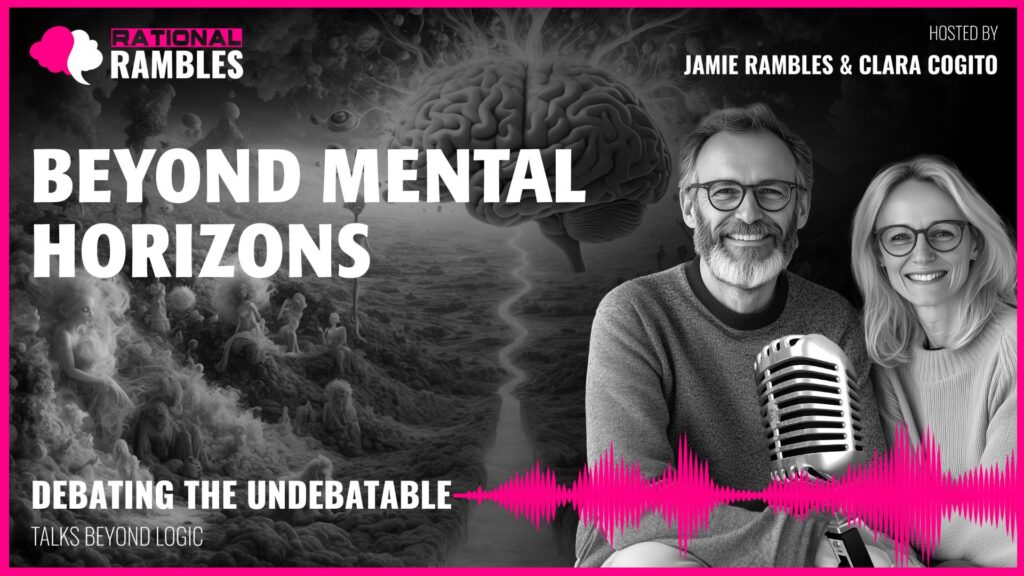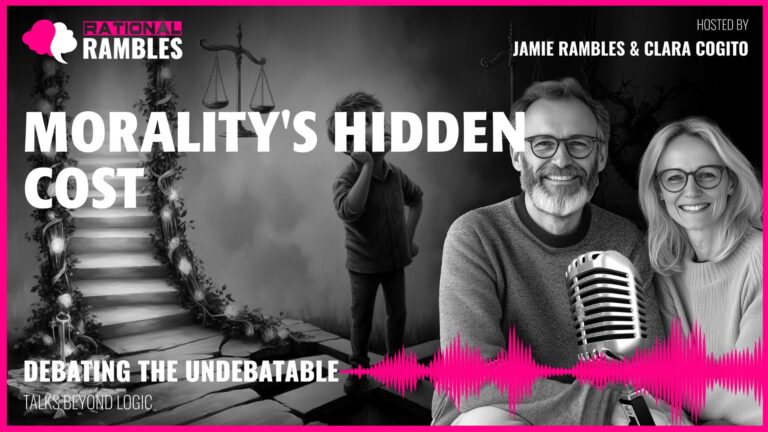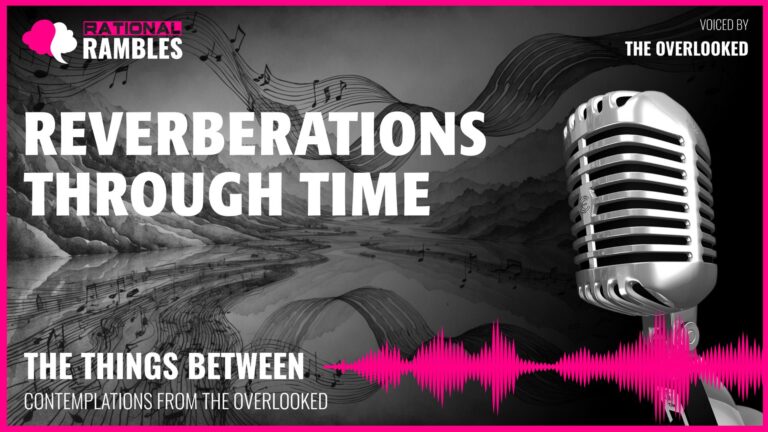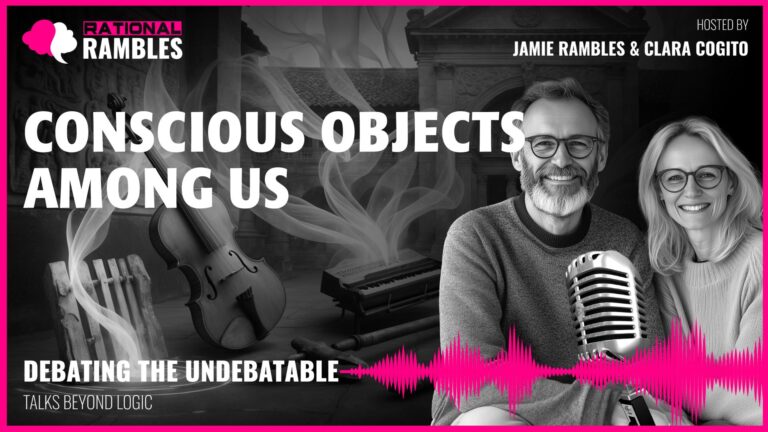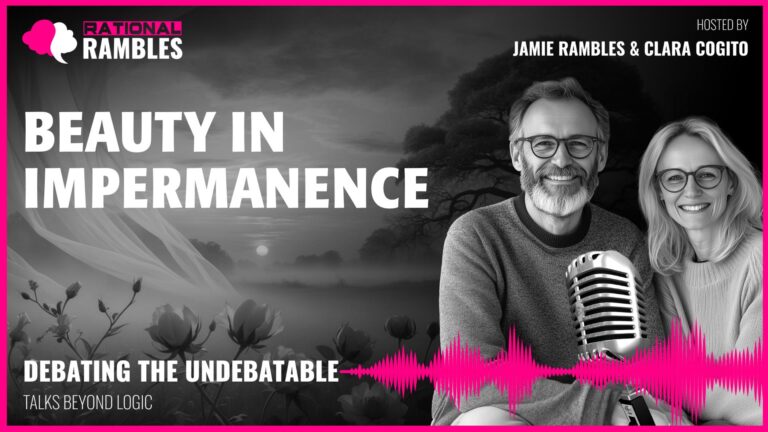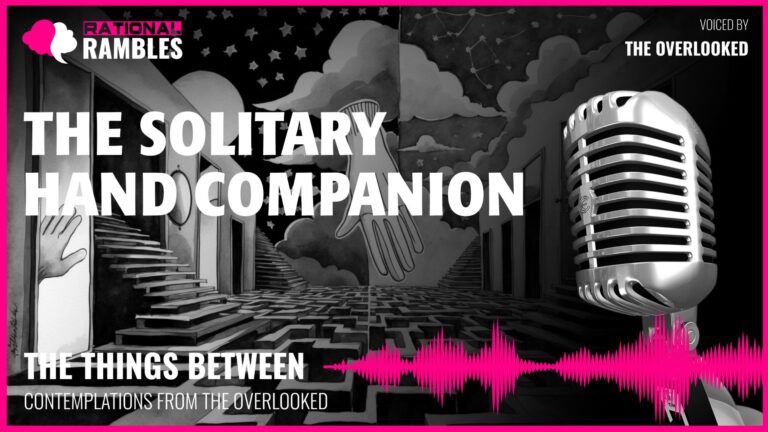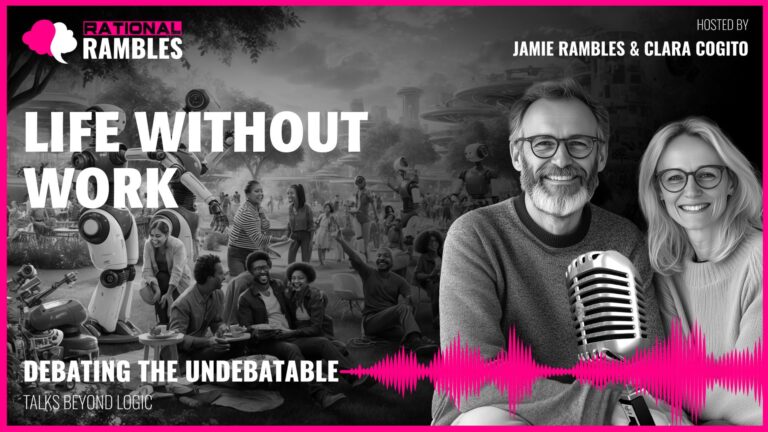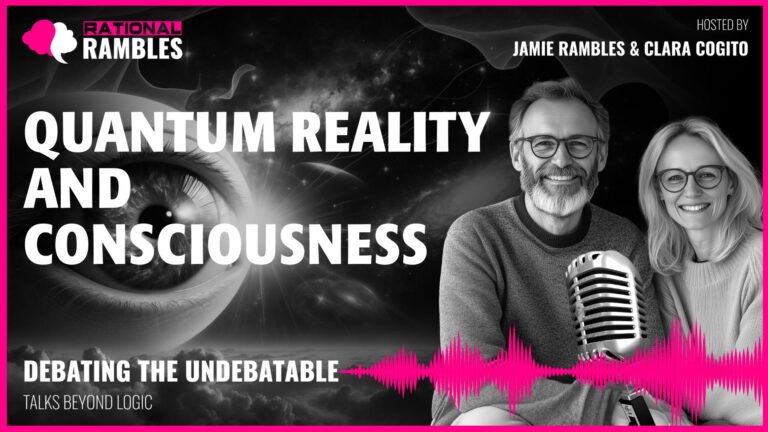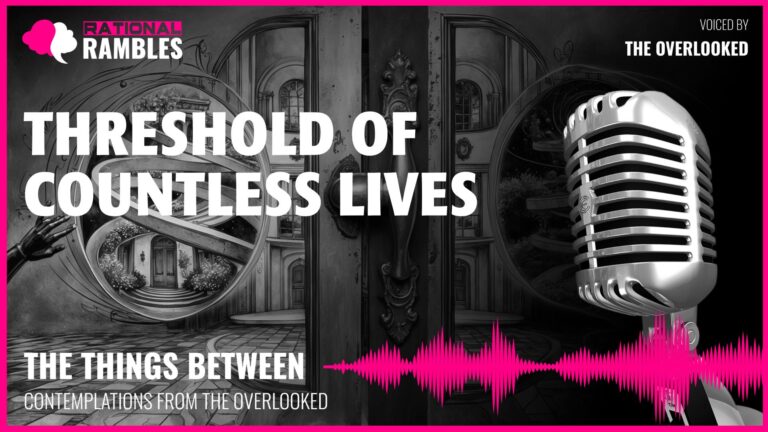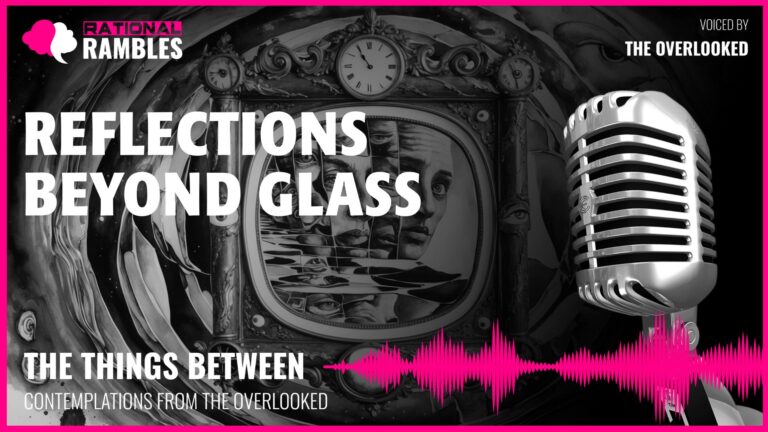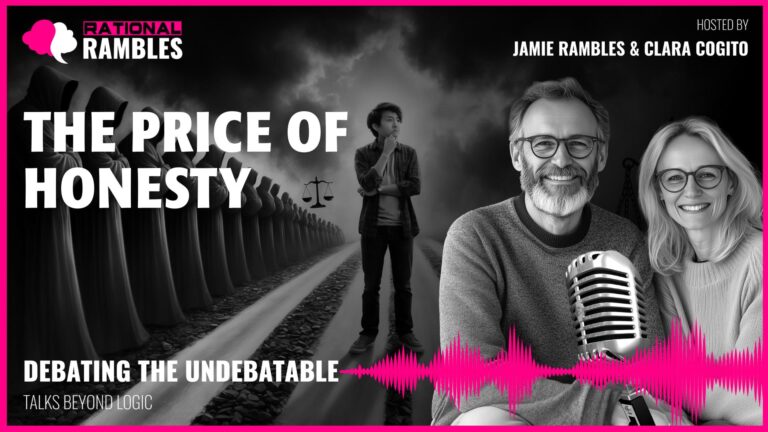Beyond Mental Horizons: Exploring Alternative Psychological Realities
Introduction: The Unexplored Terrain of Consciousness
What if the conscious experience you’re having right now—your perception of colors, emotions, thoughts, and sensations—represents just one possible configuration among countless others? What if our ordinary waking consciousness, which we take for granted as “reality,” is merely a tiny island in a vast ocean of possible mental states? These questions, once relegated to philosophical thought experiments and mystical traditions, have increasingly become subjects of serious scientific inquiry.
The notion of alternative psychological realities challenges our fundamental understanding of the human mind. It suggests that beyond the familiar landscape of our daily mental experience lies unexplored terrain—states of consciousness, perceptual frameworks, and ways of organizing experience that might be radically different from what we consider normal.
This exploration is not merely academic. Understanding the full spectrum of possible psychological experiences has profound implications for how we conceptualize mental health, approach neurodiversity, and even structure society. It raises fundamental questions about the nature of reality itself: To what extent is what we call “reality” a construction of our particular neural architecture, cultural frameworks, and evolutionary history? And if alternative psychological realities exist, what might they reveal about the human condition that our ordinary experience keeps hidden?
In this article, we venture into this fascinating territory, examining evidence from neuroscience, psychology, philosophy, and contemplative traditions to understand how the human mind might access or already embodies alternative psychological realities. We’ll explore the philosophical implications of such alternatives and consider what they might mean for our understanding of consciousness, mental health, and human potential.
The Architecture of Experience: How the Brain Constructs Reality
To understand alternative psychological realities, we must first examine how our brains construct our ordinary experience of reality. Neuroscientist David Eagleman offers an illuminating metaphor: our brains are like submarines navigating the depths of reality with only a few portholes to peer through. What we experience as “reality” is just the tiny slice we’ve evolved to detect and process.
The human brain, remarkable as it is, detects only a narrow band of the electromagnetic spectrum as visible light. We cannot see ultraviolet or infrared radiation without technological assistance. Similarly, our auditory system captures only a limited range of sound frequencies. Beyond these sensory limitations, our consciousness itself appears to be constrained by specific neural architectures.
Philosopher Thomas Nagel famously explored this idea in his paper “What Is It Like to Be a Bat?” He argued that even if humans could somehow be given a bat’s sensory apparatus—its echolocation system—we still wouldn’t truly know what it’s like to be a bat because we would experience these inputs through the lens of human consciousness. The bat’s phenomenological world—its subjective experience—remains fundamentally inaccessible to us.
This sensory filtering represents just the first level of constraint on our experience. The brain doesn’t passively receive sensory data; it actively constructs perceptions based on predictions and prior beliefs. According to predictive processing theories championed by neuroscientists like Karl Friston, perception is a process of prediction error minimization. The brain generates models of what it expects to encounter and primarily processes the differences between those expectations and incoming sensory data.
In this view, consciousness isn’t so much a faithful representation of external reality as it is a useful model constructed by the brain. Philosopher Henri Bergson suggested that the brain might be better understood not as a producer of consciousness but as a reducer or filter—narrowing down the vast spectrum of possible experience to just what’s useful for survival and reproduction.
If Bergson’s filter theory contains truth, then alternative psychological realities might be accessed not by constructing entirely new forms of consciousness but by altering these filters—removing barriers to experiences that are normally inaccessible. This perspective aligns with William James’s observation that our normal waking consciousness is just one type of consciousness, “whilst all about it, parted from it by the filmiest of screens, there lie potential forms of consciousness entirely different.”
Evidence for Alternative Psychological Realities
The idea that alternative psychological realities exist is not mere speculation. Evidence from multiple sources suggests that human consciousness can take radically different forms from what most of us experience in everyday life.
Neurological Variations
One of the most compelling sources of evidence comes from individuals with unique neurological conditions. Synesthesia, for instance, represents a fascinating window into alternative perceptual realities. People with synesthesia experience cross-modal sensory associations—they might perceive numbers as having specific colors, or musical notes as having tactile textures. For a synesthete, these associations are not metaphorical but literally perceived. The number “5” doesn’t merely remind them of the color red; it appears red.
This condition reveals that even a relatively minor variation in neural wiring can produce a qualitatively different perceptual reality. If small changes can produce such notable differences, more dramatic neural reorganizations might lead to truly alien forms of experience.
Acquired savant syndrome provides another striking example. Following certain types of brain injury, some individuals suddenly develop extraordinary abilities in mathematics, music, or art that they never possessed before. These cases suggest that alternative psychological realities—complete with different cognitive capacities—might be latent in all human brains, perhaps accessible if the usual constraining neural pathways are bypassed or reconfigured.
Altered States of Consciousness
Psychedelic substances have long been known to radically alter consciousness, but recent scientific research has begun to provide mechanistic explanations for these alterations. Studies by Robin Carhart-Harris and colleagues suggest that substances like psilocybin and LSD decrease activity in the brain’s default mode network (DMN), a collection of brain regions associated with self-referential thinking and the maintenance of the ego.
When the DMN’s activity is reduced, the boundaries between self and world become more permeable, and the brain enters a state of increased entropy or disorder. This appears to allow for novel connections between brain regions that don’t typically communicate directly. The result is a state where the ordinary structure of consciousness—the sense of being a separate self navigating a world of discrete objects—dissolves into a more fluid and interconnected experience.
What’s particularly interesting about psychedelic states is that many people report them as feeling more “real” than ordinary consciousness, not less. They often describe accessing a deeper reality normally filtered out by everyday awareness. This echoes what contemplative traditions have claimed for centuries—that our ordinary waking consciousness might in some sense be limited or even illusory.
Contemplative Traditions
Across cultures and throughout history, contemplative traditions have developed sophisticated methods for exploring alternative states of consciousness. Whether through Buddhist meditation, Hindu yoga, Christian mysticism, or Sufi practices, these traditions have created detailed maps of experiential states that lie beyond ordinary awareness.
What’s remarkable is the convergence in phenomenological reports across these diverse traditions. Despite very different theological frameworks, practitioners often describe similar stages and qualities of experience—states of non-dual awareness where the subject-object distinction collapses, experiences of boundless compassion or love, and perceptions of the interconnectedness of all phenomena.
This cross-cultural convergence suggests that these states might represent objectively existing potentials within human consciousness rather than merely culturally constructed experiences. The contemplative traditions might be understood as conducting multi-generational experiments in consciousness exploration, creating technologies of awareness that allow access to states that are otherwise inaccessible.
Cultural Variations
Beyond these dramatic alterations of consciousness, more subtle but equally significant variations in psychological reality appear across cultures. Cross-cultural psychology has documented how culture shapes perception in ways that create different experiential worlds. For instance, some cultures don’t distinguish between certain colors that English speakers consider distinct, like green and blue. Their perceptual reality is literally different—they see these colors as variations of the same hue rather than as separate colors.
Similarly, emotions aren’t simply biological givens but are partly constructed through cultural and linguistic frameworks. The German concept of “waldeinsamkeit” (a feeling of solitude and connectedness when alone in woods), the Portuguese “saudade” (a melancholic longing for something absent), or the Japanese “mono no aware” (a pathos derived from the transience of things) represent emotional experiences that require specific cultural scaffolding to fully access.
These examples suggest that alternative psychological realities aren’t necessarily exotic or rare—they exist all around us in the diverse ways that humans across cultures experience the world. The boundaries of possible experience may be far wider than any single cultural framework can capture.
The Construction of Psychological Reality
As we examine the evidence for alternative psychological realities, an important question emerges: To what extent are these different states of consciousness discoveries versus creations? Are contemplative traditions, for instance, discovering pre-existing potential states of consciousness, like astronomers discovering new celestial bodies? Or are they more like artists, actively creating new forms of experience through their practices and conceptual frameworks?
The Interplay of Discovery and Creation
The relationship between discovery and creation in psychological reality appears to be complex and bidirectional. The potential for certain states might be inherent in our neural architecture, but actualizing them might require specific cultural technologies and conceptual frameworks.
A useful analogy is music. The physical principles of harmony exist independently of human culture—they’re based on mathematical relationships between frequencies. Yet specific musical traditions are human creations that draw out those principles in particular ways. Different cultures have created vastly different musical traditions, all constrained by the same acoustic principles but expressing them in unique ways.
Similarly, consciousness might have certain parameters fixed by our neurobiology, but within those parameters, there’s room for tremendous innovation and diversity in the states of consciousness we can access or create. The laws of neural processing constrain what’s possible, but within those constraints, humans have developed a remarkable array of techniques for altering and expanding consciousness.
The Role of Language and Concepts
Language plays a particularly important role in constituting psychological reality. Our conceptual frameworks don’t merely describe pre-existing experiences; they help shape and structure those experiences themselves. Learning a new emotional concept, for instance, doesn’t just provide a label for a pre-existing feeling—it can actually create a more differentiated emotional experience.
Research on emotional granularity supports this view. People who possess more refined emotional vocabularies don’t simply have better ways of describing the same emotional states; they actually experience emotions in more nuanced ways. The distinctions between anxiety, worry, fear, and dread aren’t just semantic—they can become phenomenologically real differences in how emotions are experienced.
This suggests that language isn’t just descriptive but generative of experience. Developing new conceptual vocabularies—whether through cultural exchange, philosophical innovation, or artistic creation—might be one pathway to expanding the repertoire of human experience. By learning to make new distinctions and connections, we might actually create new ways of experiencing the world.
The Looping Effects of Categories
Philosopher Ian Hacking has explored how we “make up people” through our classificatory schemes. The categories we use to describe psychological differences don’t simply name natural kinds that exist independently of our descriptions; they interact with the phenomena they aim to describe, creating what Hacking calls “looping effects.”
This is particularly evident in psychiatric classification. When we label certain experiences as symptoms of specific disorders, these labels can change how people understand and relate to their experiences, which in turn can alter the course and manifestation of those experiences. The very categories we use to describe mental differences shape how people experience those differences.
This constructivist perspective challenges classical ideas about objective psychiatric categories. It suggests that our understanding of psychological reality is inherently entangled with how we conceptualize and categorize it. We don’t just discover alternative psychological realities—in some sense, we participate in constructing them through our conceptual frameworks.
Beyond Normality: Rethinking Psychological Diversity
The recognition that multiple psychological realities exist and are potentially valid challenges our conventional understanding of mental “normality.” If consciousness can take many forms, on what basis do we privilege one configuration as normal and pathologize others?
From Deficit to Diversity
Traditional approaches to psychological differences have often employed a deficit model, where variations from statistical norms are seen as deficiencies to be corrected. The very concept of “disorder” in mental health implies deviation from a proper order—a normative judgment rather than a purely descriptive one.
However, an alternative view is gaining traction: the neurodiversity paradigm. This perspective frames psychological differences not as deficits but as variations—different ways of processing information and experiencing the world that may have their own strengths and limitations depending on context.
From this perspective, conditions like autism, ADHD, or even schizophrenia aren’t necessarily “disorders” but different cognitive styles or ways of experiencing reality. This doesn’t mean ignoring genuine suffering associated with these conditions, but it does involve distinguishing between suffering inherent to a condition versus suffering imposed by societal reactions to difference.
This shift parallels the social model of disability, which argues that disability arises from the mismatch between a person’s characteristics and their environment rather than from the characteristics themselves. The challenge isn’t the alternative psychological reality itself but the friction when it interacts with a society optimized for a different kind of mind.
Evolutionary Perspectives on Psychological Diversity
From an evolutionary standpoint, what we call “disorders” might sometimes be specialized cognitive adaptations that are maladaptive in some environments but adaptive in others. Some traits associated with autism, like heightened pattern recognition and attention to detail, can be beneficial in fields like mathematics, engineering, or art. Aspects of ADHD might have been advantageous in hunter-gatherer societies that required heightened environmental awareness and quick shifts in attention.
This ecological perspective suggests we might move from a monolithic understanding of optimal mental functioning toward something more like an ecosystem model, where different forms of consciousness represent adaptations to different environments or solutions to different problems. Just as biodiversity strengthens natural ecosystems, cognitive diversity might strengthen our collective problem-solving capacity.
The Value of Diverse Psychological Perspectives
If different psychological realities offer unique perspectives and capabilities, then this diversity might be not just something to tolerate but something to actively value. Different cognitive styles might solve different problems in complementary ways, contributing to what philosophers have called a “cognitive ecology”—an ecosystem of minds with diverse strategies for understanding and engaging with the world.
Research increasingly suggests that some alternative psychological states actually contribute uniquely to societal wellbeing. People with certain forms of autism may contribute unique perspectives in science, art, and technology precisely because they process information differently. Similarly, people who experience periodic depression might have enhanced analytical abilities during depressive episodes, allowing for more realistic assessments of complex situations.
This perspective suggests a future where we might celebrate rather than merely tolerate the full spectrum of human consciousness. Rather than trying to shape everyone to fit a standardized environment, we might create more diverse environments that can accommodate and benefit from different forms of consciousness and cognition.
Philosophical Implications: The Nature of Reality and Mind
The recognition that multiple psychological realities exist raises profound philosophical questions about the nature of reality itself. If consciousness can take radically different forms, what does this tell us about the relationship between mind and world?
The Constructed Nature of Perception
The diversity of possible psychological realities reinforces the view that perception is not a passive reception of objective reality but an active construction. The world as we experience it is not a direct reflection of mind-independent reality but a model constructed by our brains based on sensory inputs, prior beliefs, and predictive processes.
This doesn’t necessitate a radical relativism where any construction is as valid as any other. Some models of reality are more adaptive and accurate for certain purposes than others. But it does suggest an epistemological humility—a recognition that our particular way of experiencing reality is just one possibility among many, not a privileged access to things as they are in themselves.
The Hard Problem of Consciousness
Alternative psychological realities also complicate the already challenging “hard problem of consciousness” identified by philosopher David Chalmers—the question of why physical brain processes give rise to subjective experience at all. If consciousness can take radically different forms, then any comprehensive theory of consciousness must account not just for why there is experience but for the full range of possible experiences.
This diversity of possible experiences suggests that consciousness might be a more fundamental feature of reality than specific to human brains. Some philosophers, like Galen Strawson, have argued that the existence of consciousness might be better explained by panpsychism—the view that consciousness is an intrinsic feature of reality, present in some form at all levels—than by the emergence of consciousness from entirely non-conscious matter.
The Self as Construction
Perhaps the most profound philosophical implication concerns the nature of the self. Many alternative psychological states—from psychedelic experiences to meditative states to certain neurological conditions—involve alterations in the ordinary sense of self. The boundaries between self and world become more permeable; the sense of being a separate entity navigating an external reality dissolves.
These experiences suggest that our ordinary sense of being a separate, enduring self might be a construction rather than a fundamental reality. The self might be better understood as a process or activity rather than a thing—a way of organizing experience rather than an entity that has experiences.
This perspective aligns with the Buddhist concept of anatta (no-self) and with contemporary theories in cognitive science that view the self as a useful fiction—a narrative construction that helps coordinate action and maintain social relationships but isn’t a metaphysical reality. If this view is correct, then alternative psychological realities that involve different configurations of selfhood aren’t deviations from reality but potentially valid ways of organizing experience.
Ethical Considerations: Respecting Psychological Diversity
The recognition that alternative psychological realities exist and may have their own validity raises important ethical questions about how we treat psychological differences in individuals and society.
Distinguishing Harm from Difference
A crucial ethical distinction is between psychological differences that primarily cause suffering because of social intolerance versus those that cause inherent suffering regardless of social context. The former might be better addressed through acceptance and accommodation rather than treatment or normalization.
This aligns with philosopher John Stuart Mill’s harm principle—the idea that the only legitimate reason to interfere with someone’s liberty is to prevent harm to others. Applied to neurodiversity, this suggests that interventions should primarily be justified by preventing harm rather than enforcing conformity to arbitrary norms.
Making this distinction isn’t always straightforward. How do we determine whether suffering is inherent to a condition or imposed by societal reactions? This requires careful attention to individuals’ own accounts of their experiences as well as empirical investigation of how different conditions manifest across various social contexts.
The Right to Cognitive Liberty
The recognition of alternative psychological realities also raises questions about cognitive liberty—the right to control one’s own consciousness and to access different states of consciousness. If alternative psychological realities represent valid ways of experiencing the world, should individuals have the right to explore and potentially inhabit these alternative states?
This has implications for debates about psychedelic substances, cognitive enhancement technologies, and even psychiatric interventions. Restrictions on access to consciousness-altering practices or substances might be seen as limitations on cognitive liberty, while forced normalization through psychiatric interventions might be seen as violations of cognitive autonomy.
Creating Inclusive Environments
From an ethical perspective, recognizing the validity of alternative psychological realities suggests an imperative to create more inclusive social environments that can accommodate psychological diversity. This might involve adjusting sensory environments for those with different sensory sensitivities, providing alternative communication methods for those who process language differently, or developing more flexible social norms that allow for diverse styles of interaction.
This approach doesn’t mean abandoning all shared standards or expectations. Society requires some degree of shared reality and common understanding to function cohesively. But we might distinguish between requiring shared behavior in certain contexts versus requiring shared inner experience. We can create behavioral norms while respecting experiential diversity.
The Future of Consciousness Exploration
As our understanding of consciousness deepens and our technologies for investigating and altering mental states advance, what might the future hold for the exploration of alternative psychological realities?
Technologies of Consciousness
We’re already developing technologies that might allow for unprecedented exploration of consciousness. Advanced neuroimaging techniques provide increasingly detailed maps of brain activity during various states of consciousness. Brain-computer interfaces offer the possibility of directly modifying neural activity in targeted ways. Virtual reality creates immersive simulated environments that can alter perception and induce novel experiences.
Some researchers are developing what might be called “consciousness simulators”—virtual reality programs that approximate what it’s like to experience certain cognitive differences. There are VR programs that simulate aspects of psychosis or autism to build empathy. While these are currently crude approximations, as our understanding of the neural correlates of various experiences advances, these simulations could become increasingly sophisticated.
The possibility of “cognitive tourism”—temporarily experiencing consciousness from radically different perspectives—might eventually become a reality. Just as we developed technologies like radio telescopes and infrared cameras to detect radiation beyond our natural perceptual limits, we might develop technologies to access forms of consciousness beyond our ordinary range.
Integration of Traditional and Modern Approaches
Another promising direction is the integration of traditional contemplative practices with modern scientific methods. Contemplative traditions have developed sophisticated techniques for exploring consciousness over thousands of years, creating detailed maps of experiential states beyond ordinary awareness. Modern neuroscience is now beginning to investigate these states empirically, using brain imaging and other methods to understand their neural correlates.
This cross-fertilization between ancient wisdom traditions and contemporary science offers the possibility of a more comprehensive understanding of consciousness—one that integrates first-person phenomenological reports with third-person scientific data. Projects like the Mind & Life Institute, which facilitates dialogue between contemplative practitioners (including the Dalai Lama) and scientists, exemplify this integrative approach.
Collective Consciousness Evolution
Perhaps the most intriguing possibility is that human consciousness itself might be evolving. Throughout history, major shifts in human culture and technology have created new ways of experiencing and understanding the world. The development of written language, for instance, fundamentally altered human cognition, creating new forms of extended thinking and collective memory.
As we develop new conceptual frameworks, technologies, and social arrangements, we might be creating the conditions for novel forms of consciousness to emerge. The internet and digital technologies have already created unprecedented forms of extended cognition and collective intelligence. Future developments in artificial intelligence, biotechnology, and social organization might similarly expand the boundaries of possible experience.
This evolution need not be understood in strictly biological terms. Cultural evolution operates much faster than genetic evolution, allowing for rapid transformation of human experience through the development of new “consciousness technologies”—tools, practices, concepts, and social arrangements that alter how we experience and relate to reality.
Conclusion: Embracing the Plurality of Mind
Our exploration of alternative psychological realities suggests that what we call “normal” consciousness is just one configuration among many possibilities—not a privileged standard against which all variations should be measured. The human mind appears capable of experiencing reality in radically different ways, each with its own unique perspectives, limitations, and potentials.
This recognition calls for epistemic humility—an awareness that our own psychological reality is no more absolute than our position in physical space. Just as we came to understand that the Earth is not the center of the universe, we might come to understand that our ordinary waking consciousness is not the central or most valid form of experience.
This doesn’t mean ignoring genuine suffering or abandoning all normative judgments about psychological states. Some alterations of consciousness clearly cause distress and dysfunction regardless of social context, while others represent valid variations that cause suffering primarily because of social intolerance or lack of accommodation.
But it does suggest that we might benefit from approaching psychological diversity with greater curiosity and openness—recognizing that different forms of consciousness might offer unique insights, capabilities, and ways of being that could enrich our collective understanding. Just as biodiversity strengthens natural ecosystems, cognitive diversity might strengthen our collective capacity to understand and respond to the complex challenges we face.
The exploration of alternative psychological realities isn’t merely an academic exercise but a potentially transformative journey. By expanding our understanding of what consciousness can be, we might also expand our understanding of what it means to be human—and in doing so, create more inclusive communities that can accommodate and benefit from the full spectrum of human experience.
In the end, the recognition of multiple psychological realities doesn’t diminish our shared humanity but enriches it. It suggests that what unites us is not the specific content of our consciousness but our capacity for consciousness itself—our ability to experience, to feel, to know. Within that shared capacity lies a universe of possible experiences, a plurality of minds waiting to be explored, understood, and embraced.


